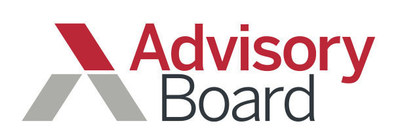|
27.06.2017 17:58:00
|
Average Hospital Revenue Cycle Leaves $22 Million on the Table
WASHINGTON, June 27, 2017 /PRNewswire/ -- Hospitals and health systems have seen healthy margins the past few years despite reimbursement cuts because they focused on the cost side. Over that time, revenue cycle performance has lagged across a few key performance areas and the cost to achieve even flat performance has risen. Because of the focus on cost over revenue cycle performance, the average 350-bed hospital has an overlooked opportunity of up to $22 million in revenue capture, Advisory Board analysis shows.

Improving revenue cycle performance to decrease missed revenue opportunity means responding to four market forces.
"From top-performing revenue cycle organizations to the bottom quartile, critical benchmarks have been either stagnant or steadily sliding since 2011 and need a strategic overhaul," said James Green, National Partner, Consulting at Advisory Board. "Even if payments from government payers—Medicare, Medicaid, and insurance exchanges—remain constant in 2017, four other forces present strategic challenges to defending margins. These are increased patient consumerism driven by higher financial obligations, aggressive commercial denials and more complex payer contracts, physician engagement on documentation given demands on the acute care and medical group enterprises, and poorly executed integrations that waste potential economies of scale."
As an example of worsening trends, proprietary Advisory Board benchmarks show that median performing organizations have stagnated on net days in accounts receivable—and the overall average cost to collect worsened by 70 basis points of net patient revenue from 2011 to 2015, amounting to millions of dollars for many hospitals.
"Many hospitals and health systems have an opportunity to rise from median to top-quartile revenue cycle performance across four key metrics," said Jim Lazarus, National Partner, Technology at Advisory Board, referring to denial write offs, bad debt, cost to collect, and contract yield. "By driving better adherence to best practices, providing a better patient financial experience, and taking a more strategic approach toward legislated payment reform—institutions could make that quartile jump for each of those four metrics and improve by up to 6.4% of margin."
Advisory Board analysis of the four forces challenging revenue cycle performance also shows the following:
Commercial Payers are scrutinizing more claims than ever: Increased denials mean commercial contracts no longer provide the growing margins that used to offset lower Medicare and Medicaid reimbursement for many hospitals. Hospitals are losing, on average, five percentage points of their margin to underpayments, denials, and suboptimal contract negotiations, Advisory Board analysis indicates.
Patient obligations are neutralizing benefits of coverage gains: While insurance coverage has increased, so has bad debt. From 2008 to 2015, U.S. workers with deductibles greater than $2,000 grew from 5.0% to 19.0%, Kaiser Family Foundation surveys showed, and this trend shows no sign of slowing down. Over that time, the portion of patient obligations being written off as bad debt rose from 0.9% to 4.4%, according to Advisory Board analysis. To build more enduring relationships with patients and improve collections, hospitals and health systems should improve the patient financial experience with a foundation built on transparent search capabilities for price estimates, convenient access for scheduling and payment, a positive care encounter, and each point of financial contact contributing to the construction of a durable relationship.
MACRA is adding new performance burdens to physicians and medical groups: The Medicare and Chip Reauthorization Act (MACRA) includes significant financial penalties not only for poor quality and cost performance, but also for insufficient reporting. This increased complexity and financial risk is expected to drive even more physicians to leave solo or small group practices for hospital employment. MACRA also increased the need for precise risk adjustment documentation, which is required for an accurate Medicare Risk Adjustment Factor score that determines financial targets for bonuses and penalties for health care providers. As hospital-sponsored physician employment has increased, so has the need for resources to quickly meet documentation performance standards to minimize revenue at risk.
Payer, Patient, and Physician forces are driving consolidation: Too many hospitals stop the integration of newly joined revenue cycle organizations at the creation of a joint centralized business office and do not seek further economies of scale. More holistic integration should transform the revenue cycle from a cost center to a value generator. This integration should include a value-added shared services organization that provides a common business intelligence platform across entities and service lines systemwide, the ability to generate a single patient bill for all physician and hospital services, and the use of integrated coders to drive further understanding and coding accuracy.
"Hospitals and health systems can look to a well-established library of best practices to address these four forces. Success is attainable if hospitals and health systems can improve their visibility into performance data, overcome inefficient resource allocation, and discard the too-common 'permanent emergency' mindset that leads to tactical, unproductive approaches to strategic problems," said Christopher Kerns, Executive Director, Research at Advisory Board.
About Advisory Board
Advisory Board is a best practices firm that uses a combination of research, technology, and consulting to improve the performance of 4,400+ health care organizations. As the health care business of The Advisory Board Company (NASDAQ: ABCO), Advisory Board forges and finds the best new ideas and proven practices from its network of thousands of leaders, then customizes and hardwires them into every level of member organizations, creating enduring value. For more information, visit www.advisory.com.
To view the original version on PR Newswire, visit:http://www.prnewswire.com/news-releases/average-hospital-revenue-cycle-leaves-22-million-on-the-table-300480502.html
SOURCE The Advisory Board Company
 Der finanzen.at Ratgeber für Aktien!
Der finanzen.at Ratgeber für Aktien!
Wenn Sie mehr über das Thema Aktien erfahren wollen, finden Sie in unserem Ratgeber viele interessante Artikel dazu!
Jetzt informieren!
Nachrichten zu Advisory Board CoShsmehr Nachrichten
| Keine Nachrichten verfügbar. |